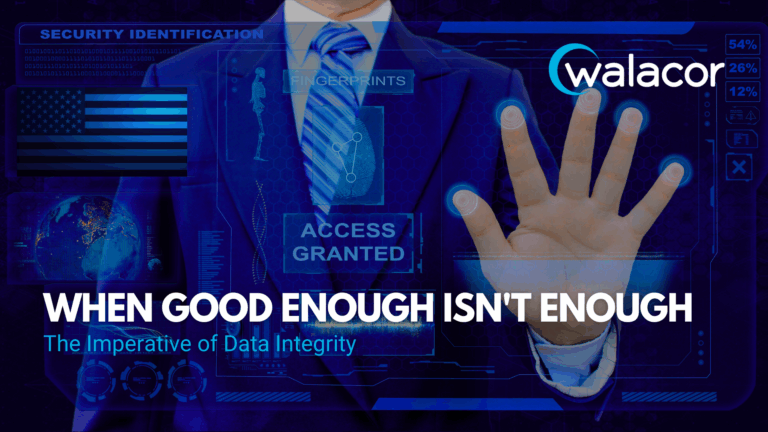
For years, enterprises have relied on the assumption that their security stack is “good enough.” Firewalls, endpoint protection, encryption at rest and in transit, multiple layers of controls built like an onion around their most critical asset: data. To their credit, this posture has carried them through countless compliance reviews, board meetings, and annual audits.
But “good enough” falls short with today’s increasing dependence on data and sophisticated threat profiles.
The Illusion of Sufficiency
CTOs and CISOs face intense pressure to project confidence in their data protection strategies, as publicly admitting they aren’t doing everything possible is unacceptable. This creates a cultural resistance within organizations to acknowledge gaps or push for more robust measures, even when presented with more effective solutions. The result is a near-universal refrain: “We already have this covered.” Cybersecurity investments are often positioned as defensive overhead rather than an offensive business-critical strategy.
This mindset fosters complacency. Breaches don’t arrive with calendar invites. They exploit novel attacks, misconfigured controls, or insider missteps, shattering the assumptions behind “good enough.”
Peeling the Onion
Data is not merely a byproduct of enterprise operations; it is the system of record for decisions, contracts, intellectual property, and trust itself. Each protective layer (network, identity, application, cloud configuration) creates the illusion of integrity. But each layer adds complexity of process, management, and cost. This tends to increase the risk to the data it is meant to protect.
Consider recent high-profile breaches: encrypted stores compromised because keys were accessible, or audit logs unable to prove tampering hadn’t occurred. These were “good enough” systems, until something managed to sidestep all of the protective measures. The stakes extend beyond privacy. If data can be altered by bad actors, both external and internal, they can alter records, inject false entries, or even erase history. Enterprises lose the ability to operate effectively because they cannot trust their data’s authenticity.
Integrity as the Non-Negotiable
Data integrity — the ability to ensure immutability, lineage, and authenticity — is the foundation upon which the enterprise bases all operations. Without it, confidentiality and availability are illusions. Companies that treat integrity as by product, assuming existing tools suffice, risk being blindsided. Like an onion, if the core isn’t hardened, the outer layers are wasted effort.
Proof, Not Assumption
The path forward isn’t adding another defensive tool, it’s elevating data to carry its own proof. Secure data must be:
- Immutable: Cannot be silently altered or erased.
- Lineage: Every step in its lifecycle is recorded and verifiable.
- Provable: Stakeholders can independently confirm its authenticity.
This is about business resilience, data that withstands a regulator’s subpoena, an adversary’s challenge, or an investor’s due diligence.
Where Walacor Fits In
Walacor was built to address this challenge. Instead of relying on traditional systems and hoping data remains sound, Walacor ensures it carries integrity guarantees.
- Immutable by Design: Every record anchored in Walacor is cryptographically sealed, preventing silent alterations or deletions. Changes are evident, provable, and historically recorded, giving executives confidence in their data’s integrity.
- Lineage You Can Prove: Walacor enforces lineage across the full data lifecycle, from origination to transformation to reporting. Whether it’s supply chain records, clinical trial data, or financial transactions, every step is independently verifiable, ensuring trust with auditors, regulators, and partners.
- Programmable Compliance: Compliance shouldn’t be a reactive audit exercise. Walacor embeds industry standards into the platform, making adherence automatic and auditable. Turn compliance into a proactive strength.
- Independent Verifiability: Walacor’s cryptographic proofs enable enterprises to demonstrate integrity without relying on internal IT trust. This protects against attackers and eliminates doubt from stakeholders.
Beyond Compliance, Toward Proof
The future of secure data isn’t another layer of defense, it’s proof. Cryptographic, immutable, and independent verification replaces assumptions with certainty. Organizations embracing this shift move beyond compliance to resilience, proving their security mathematically and immutably.
The Day It Matters
“Good enough” may have sufficed in the past. But like compounding debt, weak data integrity builds risk until it’s called due. On that day, whether it’s an insider breach, a regulatory inquiry, or a supply-chain attack, the question won’t be “Was what we had good enough?” It will be “How can our business survive when “good enough” couldn’t protect our data?”
That’s the line between recovery and ruin. With Walacor, “good enough” is replaced by unassailable proof. Secure your data’s integrity now.


